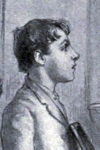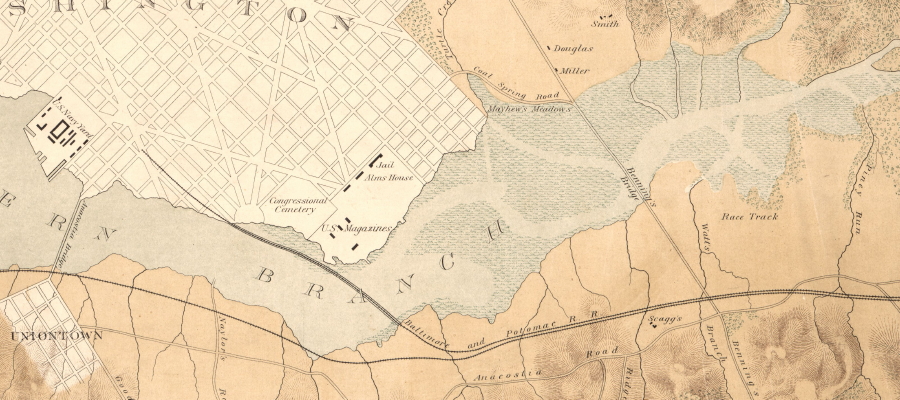 Last week, we looked at John Philip Sousa’s novel Pipetown Sandy and how it may well have been based on Sousa’s actual experiences. Today, we’ll look a little more at the geography of the book, and the central importance of the Anacostia River in its pages.
Last week, we looked at John Philip Sousa’s novel Pipetown Sandy and how it may well have been based on Sousa’s actual experiences. Today, we’ll look a little more at the geography of the book, and the central importance of the Anacostia River in its pages.
Sandy Coggles’s Pipetown is pretty clearly not the actual Pipetown. If anything, it appears to stand in for what we would today call Capitol Hill, or possibly what back then would have been Navy Yard Hill. Presumably, Capitol Hill Charlie and Navy Yard Johnny were considered and discarded by Sousa, and instead he went with a nearby neighborhood with a punchy name. While there are no addresses given, one of Coggles’s classmates lives on G Street, which is well outside of the bounds of Pipetown.
Much of the rest of the geography is absolutely correct, however. Sandy is an avid waterman, and he finances the building of a boat using the money saved from catching fish. The wood he buys to build it comes from “Tom Clark’s”– possibly the same Thomas Clarke that originally built Pipetown. The boat is tied up beyond Congressional Cemetery and the magazine, pretty much where the extension of G Street SE hits the Anacostia, and where there was a wharf in 1874.
Coggles and his buddies sail up the Eastern Branch past the magazine, the Devil’s Elbow, “the big marsh under the shadow of the Banks” and Turtle Creek. All of these landmarks can be seen on maps of the time.
Succubel’s Gut, which is a bit further up the river, is generally agreed to be a good place to hunt woodcock by all characters in the book. This fact is confirmed in an 1883 publication by the Smithsonian, Avifauna Columbiana: Being a List of Birds Ascertained to Inhabit the District of Columbia, which states that “on the shore at this point is an excellent “Woodcock brake.””

Detail of a ca. 1890 map showing the section of the Anacostia on which Coggles sailed. Piney Run, which both book and Smithsonian agree was an excellent place to hunt ducks, is at the right (LOC)
In some instances, Sousa reuses other names for his own purposes. For instance, Coggles (pic) is the star pitcher for the Pipetown baseball team, which, in one episode, plays the “Smithsonian Rangers.” While a group of that name did exist, they were not actually a baseball team, but apparently a gang of toughs that hung out around the Mall directly after the Civil War and “preyed upon passers-by”– at least according to a 1961 book by Patricia Jakes entitled Scientists of the Civil War.
The final chapters of the book detail the kidnapping of a Pipetown resident – the sister of Sandy’s best friend and his love interest – by the estranged husband of another resident. The search takes them up the Anacostia and into a cave that appears to have been built into one of the old wharves that were built east of the 11th Street bridge. The denouement contains a gun-battle on the Anacostia that ends with the miscreants drowning at Devil’s Elbow.
In short, the book does an excellent job of describing life on Capitol Hill in the days after the Civil War, and recreates its topography with remarkable fidelity. It is unfortunate that it is currently out of print and no inexpensive copies of it are to be found.
